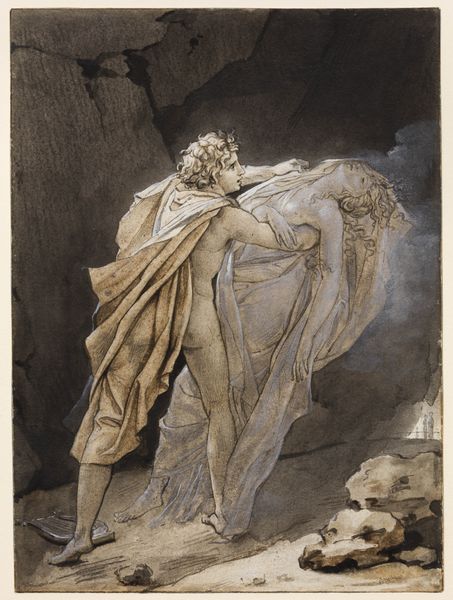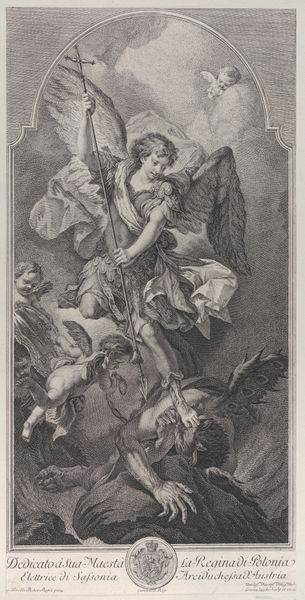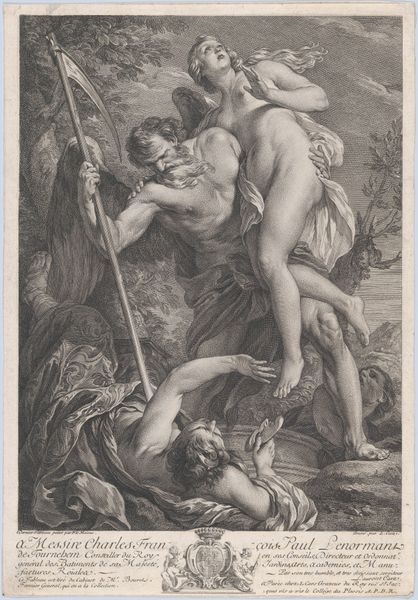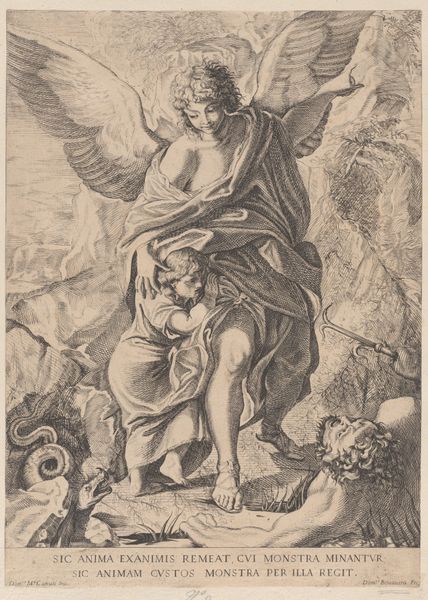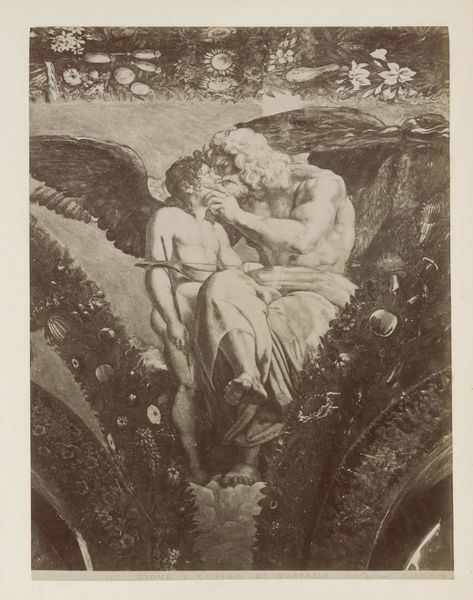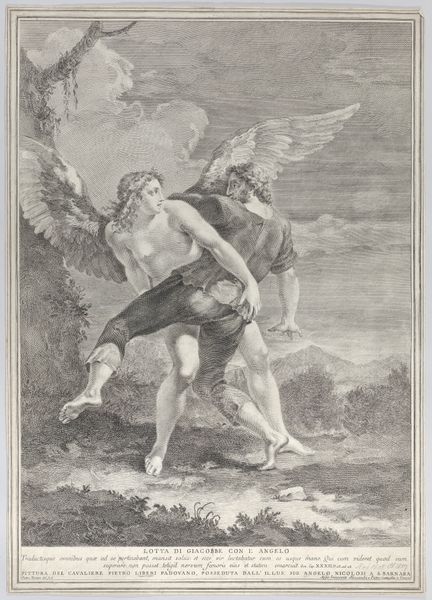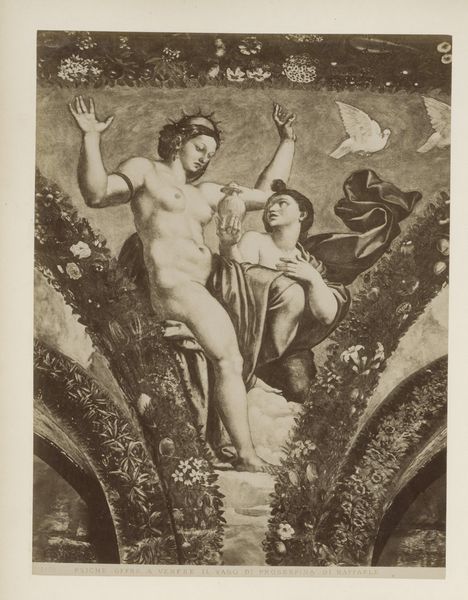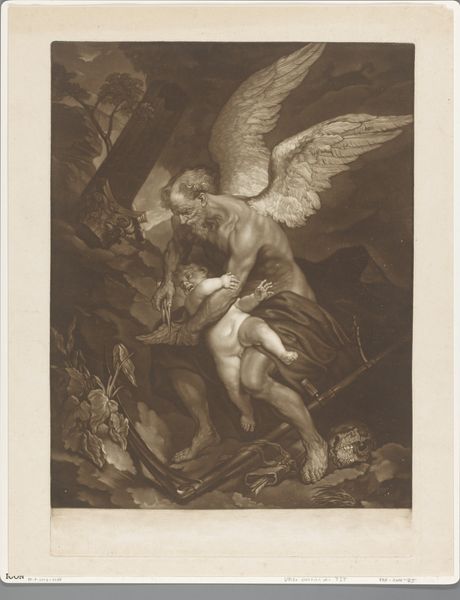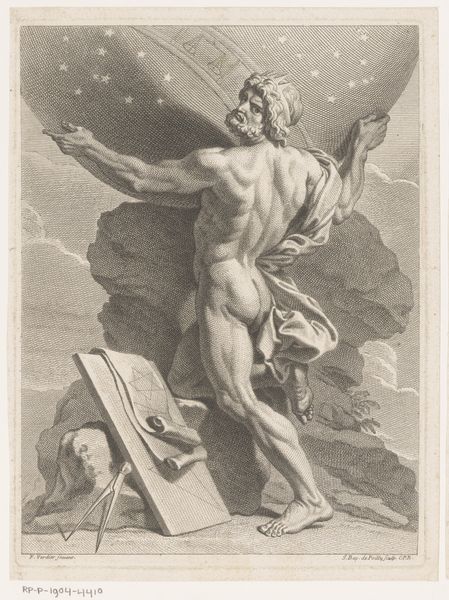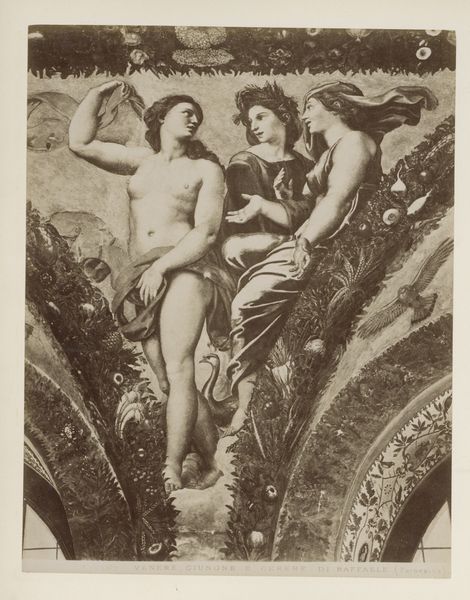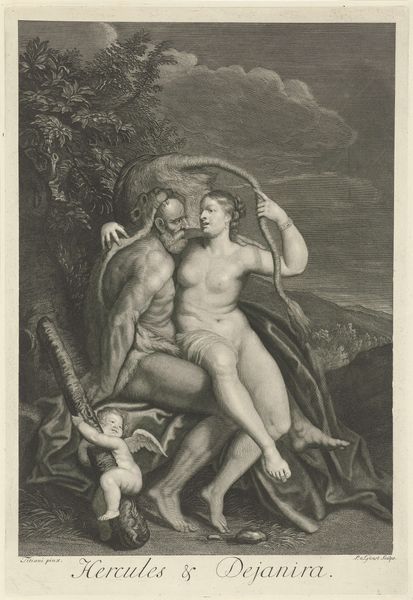
The Muse Erato Writing Verses Inspired by Love 1792 - 1802
0:00
0:00
drawing, print, pencil, charcoal
#
drawing
#
allegory
# print
#
pencil sketch
#
landscape
#
charcoal drawing
#
figuration
#
romanticism
#
pencil
#
charcoal
#
history-painting
Dimensions: 18 1/8 x 13 1/16 in. (46 x 33.2 cm.)
Copyright: Public Domain
Editor: Here we have Charles Meynier’s drawing, “The Muse Erato Writing Verses Inspired by Love,” created between 1792 and 1802 using pencil and charcoal. The monochromatic color scheme creates a serene and somewhat idealized atmosphere. What stands out to you about this piece? Curator: I’m immediately struck by how this work exemplifies the evolving role of art during the late 18th and early 19th centuries. We see a shift away from solely religious or aristocratic patronage toward a focus on civic virtue and inspiration, influenced by Enlightenment ideals. Erato, the muse, embodies the importance of the arts in society, but the addition of love transforms the political symbolism. Why do you think Meynier chose Erato as the subject? Editor: Perhaps because love poetry and romance were becoming increasingly popular during that period? It speaks to the democratization of art and culture, moving away from purely political messages towards more personal and emotional themes. Curator: Precisely. Consider the context. The French Revolution had just occurred. Artists grappled with how to represent new ideals of liberty and fraternity, but also faced censorship and political instability. By depicting a muse, Meynier cleverly alludes to the importance of free expression while simultaneously offering an image of harmonious inspiration, perhaps subtly critiquing the more chaotic aspects of the revolution. Does this reading shift your understanding of the piece? Editor: Absolutely! It’s easy to see this as just a pretty drawing, but understanding the political and social environment really enriches its meaning. Thanks for your analysis. Curator: And thank you. Considering how the public's shifting expectations and anxieties are projected onto even seemingly simple mythological scenes gives us valuable insights into this pivotal period.
Comments
No comments
Be the first to comment and join the conversation on the ultimate creative platform.

